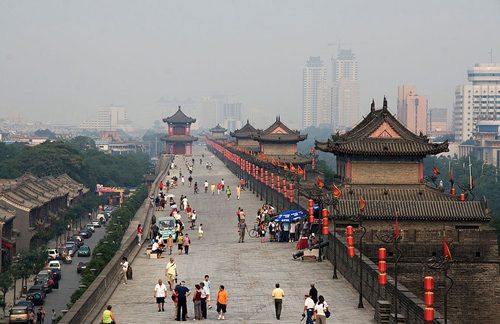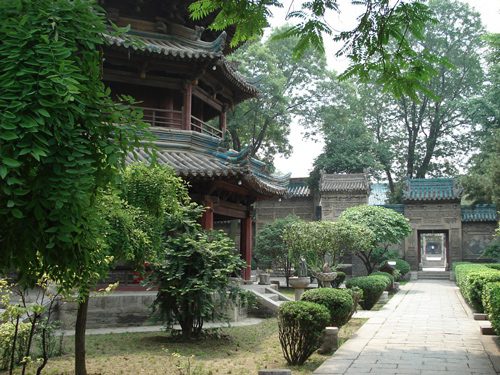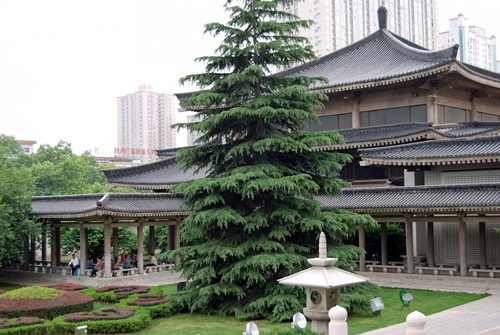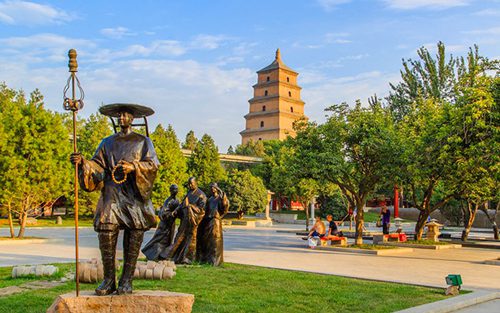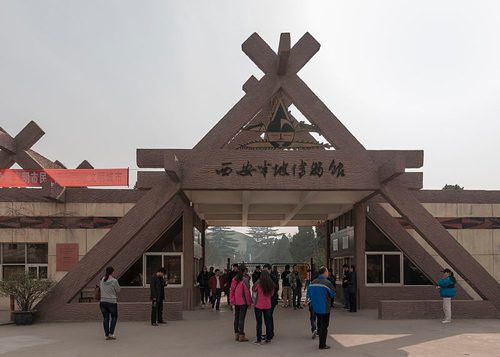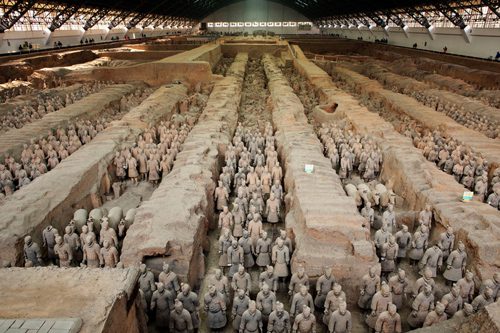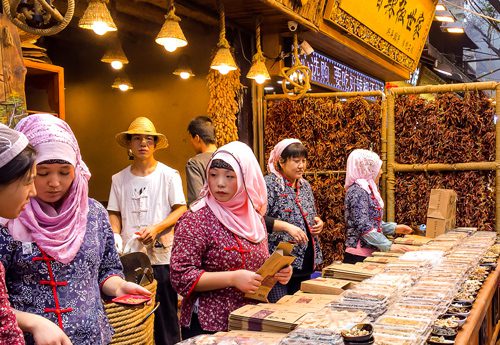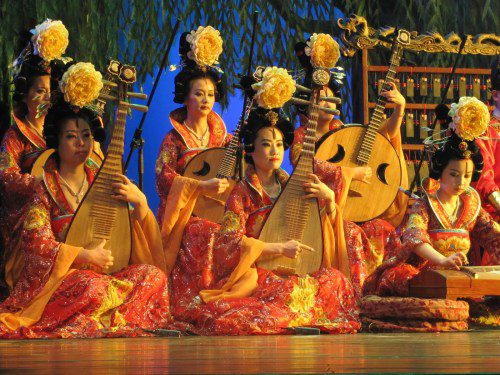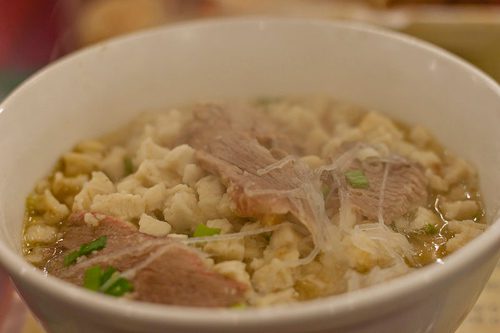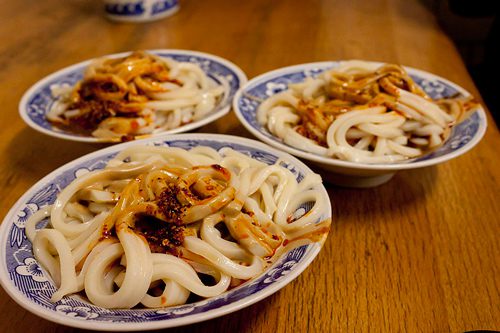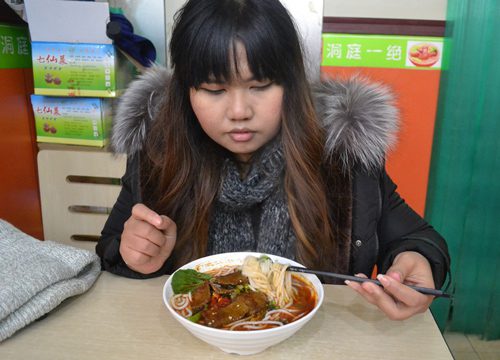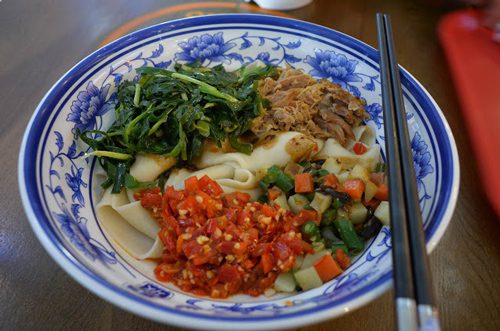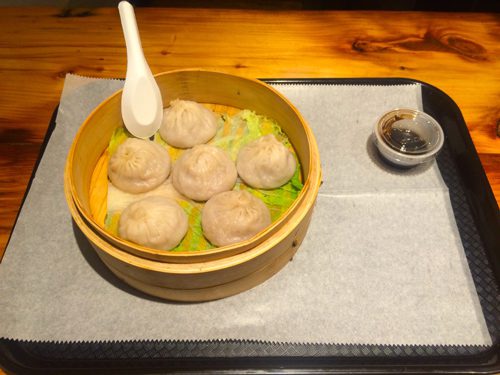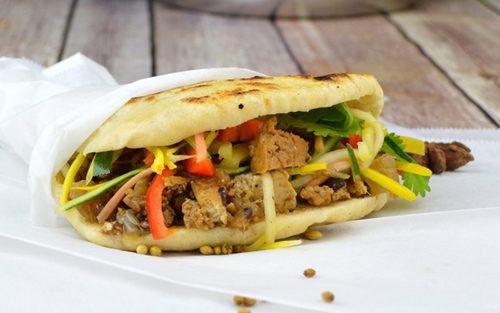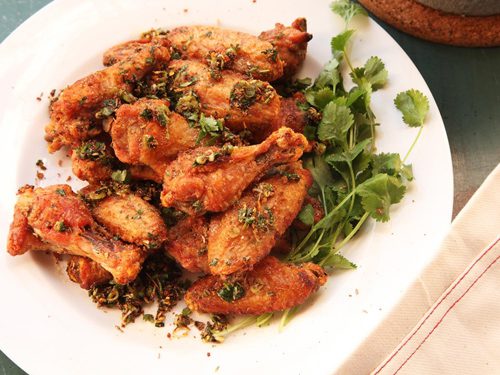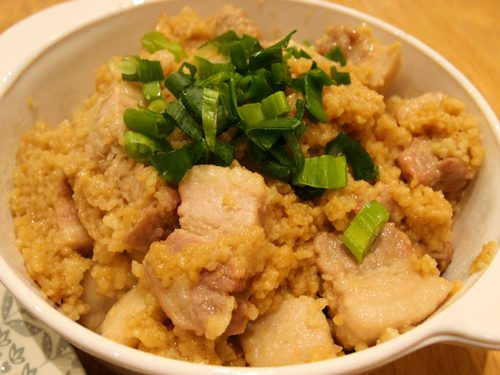Xian Travel Guide
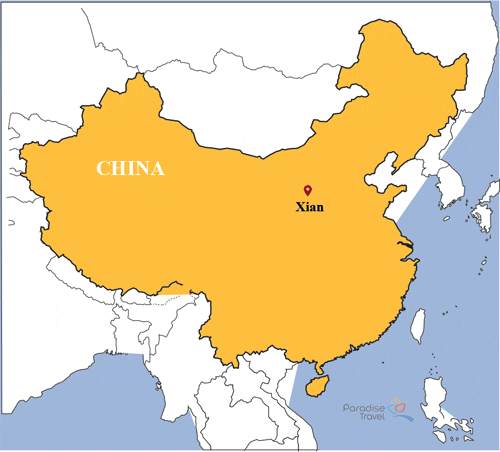 Located on the starting point of the ancient Silk Road, Xian (means ‘West Peace’ in Chinese) used to be an imperial capital of China for 13 dynasties in 1000 years. Historically named Chang’an, Xian is considered as the root of Chinese civilization. Xian is listed in four greatest ancient capitals of China besides Beijing, Nanjing and Luoyang. With long-lasting history, it is understandable that Xian is the home to various museums and cultural relics. This city also has rich culture due to being a bridge between the eastern and western trading. Nowadays, Xian attracts thousands of tourists every year and it is said that: ‘If you don’t visit Xian, you haven’t been to China’.
Located on the starting point of the ancient Silk Road, Xian (means ‘West Peace’ in Chinese) used to be an imperial capital of China for 13 dynasties in 1000 years. Historically named Chang’an, Xian is considered as the root of Chinese civilization. Xian is listed in four greatest ancient capitals of China besides Beijing, Nanjing and Luoyang. With long-lasting history, it is understandable that Xian is the home to various museums and cultural relics. This city also has rich culture due to being a bridge between the eastern and western trading. Nowadays, Xian attracts thousands of tourists every year and it is said that: ‘If you don’t visit Xian, you haven’t been to China’.
Best Time to Travel to Xian
With a temperature and monsoon climate, Xian has four distinct seasons with hot summers and cold winters. Xian’s weather is pleasant around the year and you can visit this city year-round. This city experiences a high amount of precipitation from July to September. The best time to travel to Xian is spring (March to May) or autumn (September to October). If you want to participate in skiing, stay in a ski resort in December or January.
Xian Travel Tips
- Thanks to its convenient transportation system, it is easy to travel around the city by metro, bus and taxi. If you want to travel to other cities, flights and trains are available. However, tickets are often sold out quickly 10-20 days before public holidays, so we advise you to contact a travel agency to buy in advance.
- You definitely should visit Terracotta Army when coming to Xian. Be aware that it is often crowded during weekends or Chinese public holidays, so avoid these times if you want to completely discover this attraction.
- Carry an umbrella or a raincoat if you come to Xian in summers. Avoid visiting outdoor attractions such as the Ancient City Wall at noon.
What to See in Xian
1. Terracotta Army Museum
Terracotta Army is considered as the most important archeological excavation in China which was only be found in 1974. It was constructed as a funerary art to accompany Qin Shi Huang’s tomb, the first emperor of China. 700,000 workers were involved in this vast construction along with the building of with Qin Shi Huang’s tomb. These terracotta warriors were served as the emperor’s afterlife guard. Began in 246 BC and finished in 206 BC, four years after the king’s death, Terracotta Army features 8000 life-size warriors and hundreds of horses and chariots. Not only soldiers but musicians, acrobats, and officers can also be found here – Qin Shi Huang seemed to prepare the full service for his afterlife. There are three vaults in this site for you to discover: Vault 1 with 2000 terracotta warriors, Vault 2 displays the army in battle arrays and Vault 3 for command post.
2. Ancient City Wall

- Ancient City Wall
Built during Ming dynasty in the 14th century, Xian Ancient City Wall is considered as one of the most magnificent military defensive systems in the world. It is a UNESCO Heritage Site which attracts thousands of tourists every year. The wall is 12 meters in height with 98 ramparts to avoid enemies climbing up. The highlight of this ancient wall is the 120-meter flanking tower which was used to enable the feudal soldiers to be cautious of enemies climbing up the wall. Cycling along the wall is the most exciting activity so that you can see the whole panoramic view of this splendid construction.
3. The Great Mosque

- The Great Mosque
The Great Mosque of China is recognized as the largest mosque in China. Constructed during Ming Dynasty (more than 400 years old), this mosque is the combination of Islamic and traditional Chinese architecture. Five elements of feng shui (wood, fire, earth, metal, and water) can be found in this mosque’s architecture. Chinese and Arabic calligraphy artworks are displayed across the complex. The Great Mosque is divided into five courtyards and the prayer hall is located in the fourth courtyard. You are welcome to visit this mosque even if you are not a Muslim. However, only Muslim pilgrims can enter the main prayer hall.
4. The Shaanxi History Museum

- The Shaanxi History Museum
Used to be the capital of 13 imperial dynasties, Xian hold a strategic position in feudalism. This city is endowed with various historical relics and imperial sites. 5 minutes drive from Big Wild Goose Pagoda, Shaanxi History Museum will widen our knowledge about Xian’s glamorous imperial past. Inspired by Tang-dynasty style, this museum is relatively vast with the total area of 65,000 square meters. A collection of 370,000 historical relics and antiques is displayed in Shaanxi History Museum. This museum is divided into three parts: the General Exhibition Hall with exhibitions of ancient dynasties, the Local Themes Exhibition Hall with Silk Road and Porcelain exhibitions, and the Temporary Exhibition Hall.
5. Big Wild Goose Pagoda

- Big Wild Goose Pagoda
Built in Tang dynasty (more than 1000 years ago), Big Wild Goose Pagoda holds Buddhist sutras which were brought to China from India by Xuanzang. Xuanzang was a Chinese monk who completed a journey to India in order to bring the original copies of Buddhist texts to his country. He also contributed to the translation of Indian Buddhist texts into Chinese. His intensive translation was later adopted by many Buddhist schools around China. Big Wild Goose Pagoda has been under restoration process several times due to weather and war. You will be amazed when finding out that this pagoda was made completely from bricks without any cement.
6. Muslim Quarter
As a starting point of the Silk Road, many Arabic merchants came to Xian 1000 years old for trading and business. They gathered and established their own quarter – the Muslim Quarter. Nowadays, Muslim Quarter is a popular tourist attraction in Xian where you can find numerous street foods. Delicious noodles, bread and vermicelli which are eaten with lambs and beefs are easily found here.
7. Banpo Museum

- Banpo Museum
Banpo Museum displays prehistoric artifacts and antiques of the Neolithic Yangshao culture. This museum enables tourists to visit excavated buildings which provide you with insights to Banpo people’s life. Production tools, household tools, and pottery making equipment can be found here. You can get to Banpo Museum from the center of Xian or Terracota Army by bus.
What to Do in Xian
Visiting the most important archeological excavation – the Terracotta Warriors

- Terracotta Army Museum
As an ancient capital, it’s no doubt that Xian is the home to hundreds of attractive sites. Terracotta Army is considered as the most important archeological excavation in China which was only be found in 1974, and also a must-see attraction in Xian. It was constructed as a funerary art to accompany Qin Shi Huang’s tomb, the first emperor of China.
Enjoying street food and buying souvenirs at Muslim Quarter

- Muslim Quarter
As a starting point of the Silk Road, many Arabic merchants came to Xian 1000 years old for trading and business. They gathered and established their own quarter – the Muslim Quarter. Nowadays, Muslim Quarter is a popular tourist attraction in Xian where you can find numerous street foods. Delicious noodles, bread, and vermicelli which are eaten with lambs and beef are easily found here. If you are a vegetarian, it is not a right place for you. Some dishes you can try are Yangrou paomo (Flatbread in mutton soup), Rou Jia Mo (Chinese hamburger) and soup dumpling.
Watching an imperial show

- Tang Dynasty show
Enjoying a Tang Dynasty show in Tang Dynasty Palace (Tang Yue Gong) in the evening is the best way to finish a day in Xian. It is also a dinner restaurant and you can try savory dumplings while watching incredible music and dance shows. Tang is one of the most prosperous dynasties of Chinese feudalism and art and culture developed brilliantly in this era. Tang Dynasty Music and Dance shows praise the outstanding contribution of this dynasty to Chinese imperial era.
What to Eat in Xian
Located in Northwestern China, Xian cuisine is the mixture between the north and the south. Due to its geographical location, Xian is in between Shanxi and Sichuan. The foods here are both sour (Shanxi) and spicy (Sichuan). Since this region is arid compared to eastern China, rice is not the main crop here. Tourists will find more noodles, bread and dumplings in Xianese restaurants.
As being influenced by the Muslim, mutton and pork dishes are really delicious in Xian. Xianese chefs use salt, vinegar, garlic, and onion for seasonings. The foods are mostly stir-fried, steamed, and braised. Strong flavor, succulent meat, and tasty aroma – You will never regret trying Xian’s cuisines.
1. Yangrou paomo (Flatbread in mutton soup)

- Yangrou paomo
Yangrou paomo is the local specialty of Xian and popular for international travelers. A bowl of vermicelli and shredded flatbread in aromatic mutton broth will warm your body up immediately. The chefs add many seasonings to the broth, for example, shallot, ginger, aniseed, fennel, cassia, etc. to create an appealing taste. The unique feature of this dish is that it is eaten with baked pancakes. Baked pancakes are cut into small pieces and topped in the broth. Yangrou paomo is a Muslim dish, thus, it can easily be found in Muslim Quarter.
Where to try Yangrou Paomo in Xian?
- Tongshengxiang Restaurant: 5 West St, Lianhu
- Lao Sun Jia (Xian Lao Sun’s Restaurant): No.78, Dongguan Main Street, Beilin District
- Tong Sheng Xiang (Prosperity & Fortune Restaurant): No. 52, Shiyuan Road, Beilin District
2. Liangpi (Cold noodles)

- Liangpi (Cold noodles)
Xian is more famous for delicious noodles than anywhere else in China. Liangpi is a kind of cold noodles that seems not to be appealing when you first hear of it. This food is made from thinly sliced rice noodles which are boiled, then set aside until it is cooled. Chili oil, pepper powder, sesame oil, vinegar and diced garlic will be put at the top of the rice noodles. Beef, pork and egg can be added to Liangpi if you like.
3. Qishan noodles

- Qishan Noodles
This dish has a long history since Qing Dynasty. It is originated in Qishan County of Xian. The soup of this dish is sour and spicy with Sichuan pepper. The noodles are hand-made with wheat flour; hence the taste is really chewy. Pork shreds, chicken, egg, mushrooms and green onion are topped on the top of the noodles.
4. Biang Biang noodles

- Biang Biang noodles
Biang Biang is made from thick and savory wheat flour filled with eggs and oil. This dish is served with pepper, diced garlic and vinegar. Topped with meat and leafy vegetables, Biang Biang is extremely delicious with thick chewy noodles and rich broth.
5. Soup dumpling (tangbao)

- Soup dumpling (tangbao)
People could argue that soup dumpling is the local specialty of Shanghai. However, you can taste a different version of this dish in Xian. The Xian version is made with lamb or beef instead of pork in Shanghai. Inside the dumpling-wrapper, there is a perfect mixture of vegetables, meat and soup that ultimately tantalize your taste buds. Be careful since the soup inside is hot.
6. Rou Jia Mo (Chinese hamburger)

- Rou Jia Mo
Rou Jia Mo, which is a kind of Chinese sandwich, is loved by every traveler. This food has been widespread since Qin Dynasty (more than 2000 years ago). You can eat the sandwich with pork, but the Muslims usually choose beef or lamb. The meat is sophisticatedly cooked with 20 kinds of spices and stewed for hours. That’s why it has beautiful red color, appealing aroma and unforgettable flavor.
7. Hu Lu Ji (Xian Gourd Chicken)

- Xian Gourd Chicken
This dish is unique with crispy skin on the outside and tender on the inside. The chicken is poached then deep-fried to create delicious golden skin. Often served with chili, fennel and salt, it is a popular dish for both local people and tourists.
8. Fenzhengrou (Steamed beef with wheat powder)

- Fenzhengrou
The name of this dish refers you to juicy meat wrapped in crispy toasted rice. Pork belly or beef is cut into slices and seasoned with special sauce. Then, the meat is mixed with rice powder and steamed for hours.
Some famous restaurants in Xian
- Bai Xing Chu Fang: 8, Youyi East Rd., Beilin District
- Tian Hui Zhen: No. 18, Yan Xiang Lu, Yanta District
- Su Ji: 26, Ke Ji Lu Street, Yanta District
- Sichuan Hui Guan: No. 8, Nan Guang Ji Jie Street, Beilin District
- Ren Ren Ju: 127 You Yi Xi Rd., Beilin District
- Silk Road Restaurant: 24 to 28 Datang Yitong Lane, Wei’er East Street, Yanta District
- Guohua Restaurant: 86 Beidajie Street
- Yue Zhen Xuan: 142 Huan Cheng Nan Lu, Beilin District
- Prince Restaurant: 2F, Prince Hotel, #5, Fen Xiang, South Avenue
- Sheng Hao Xuan: Ke Chuang Rd., Yanta District


